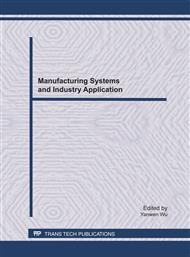p.344
p.350
p.356
p.363
p.368
p.372
p.377
p.382
p.386
Improved Subdivision Based Halftoning Algorithm
Abstract:
The subdivision based halftoning algorithm works in a statistical way. Analysis of its output shows that, error accumulation and rounding operation may produce big quantization error, and there may be artifacts in its output. Some improvements have been proposed. First, a procedure is added to find cases with big quantization error, and to solve the problem. Second, instead of propagating error sequentially as in the algorithm, propagating error along random directions has been tested to reduce the artifacts in the output. Third, propagating error along a direction, in which the quantization error of each subpart is the minimum, has also been tested to improve the output quality. Halftoning tests show that the improved algorithm produces clearer output than the original.
Info:
Periodical:
Pages:
368-371
Citation:
Online since:
June 2011
Authors:
Keywords:
Price:
Сopyright:
© 2011 Trans Tech Publications Ltd. All Rights Reserved
Share:
Citation:


